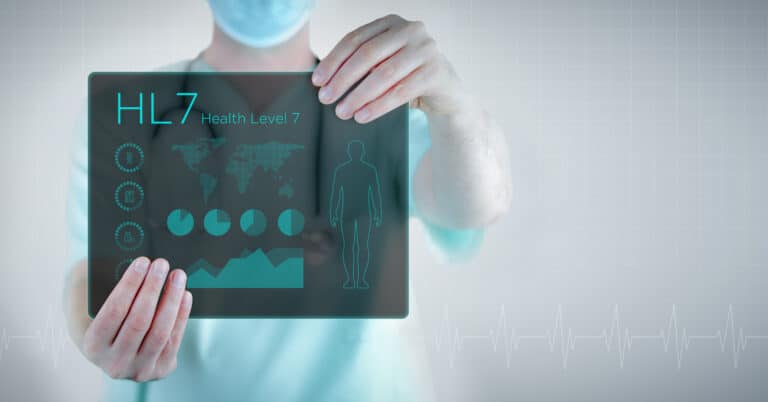

Uncover the role of HL7 in healthcare, its impact on medical facilities, and how it enhances transcription services for better clinical documentation. Free consult!
In the ever-evolving world of healthcare, the efficiency and accuracy of information exchange are paramount. HL7, or Health Level 7, is a cornerstone in this landscape, streamlining how medical data gets shared across various systems. This blog delves into the essence of HL7, its significance in different medical facilities, and how advanced transcription services are leveraging it to revolutionize clinical documentation.
HL7 is a set of international standards for the exchange of administrative and clinical data between various software applications used by diverse healthcare systems. Developed by Health Level Seven International, these standards focus on the language, structure, and data types required for seamless integration and exchange.
HL7’s versatility makes it integral to a wide array of medical facilities:
In the realm of clinical documentation, transcription services play a pivotal role. The integration of HL7 standards in these services marks a significant leap towards more efficient, secure, and reliable healthcare documentation.
Athreon’s transcription service, Trans|IT, exemplifies the effective use of HL7. By integrating these standards, Athreon ensures that its transcription solutions are not just secure and accurate, but also highly adaptable to various EHR systems. This integration plays a critical role in enhancing the efficiency of healthcare providers and ensuring the security and confidentiality of patient data.
For medical centers looking to streamline their clinical documentation process, it is crucial to understand the financial implications of establishing an HL7 interface with a transcription company. This integration is pivotal in ensuring efficient data exchange, but it comes with varying costs depending on several factors. Let’s explore these factors in detail:
The complexity of the required HL7 integration significantly influences the cost. Standard integrations with minimal customization are generally more budget-friendly. In contrast, complex integrations, which may involve linking multiple systems or extensive customization, tend to be more expensive.
The integration may necessitate new software or hardware to support the HL7 interface. Any necessary upgrades to existing systems for compatibility purposes also contribute to the overall cost.
These costs encompass the labor involved in the interface’s development and implementation. This includes the expertise of IT professionals and consultants who specialize in HL7 integrations, which can be a significant portion of the budget.
Rigorous testing is essential to ensure the interface operates correctly and data is accurately transmitted. This phase, including any necessary troubleshooting, is critical but can add to the costs.
Introducing a new system requires training staff to effectively use it. Additionally, ongoing support to address any operational issues is a crucial factor that impacts the cost.
Maintaining and updating the interface to comply with the latest HL7 standards is an ongoing expense. This ensures that the system remains effective and secure over time.
The pricing models of transcription and software vendors vary. Some may offer a one-time fee, while others might charge based on a subscription model or the volume of data processed. These models directly affect the overall financial commitment.
Any additional features like enhanced security, data analytics, or specialized reporting can further drive costs. These are often essential for more comprehensive and secure data management but need to be budgeted for accordingly.
Given these diverse factors, the cost for a medical center to establish an HL7 interface with a transcription business can range from a few thousand dollars for basic setups to tens of thousands for more sophisticated solutions. Medical centers should consult with transcription service providers and IT consultants specializing in HL7 integrations to obtain a precise estimate. They can offer a customized estimate based on the unique needs and requirements of the medical center.
Integrating HL7 with transcription services represents a significant investment for medical centers. However, the long-term benefits of streamlined data exchange, improved patient care, and enhanced operational efficiency often outweigh the initial costs. As with any significant technological integration, careful planning and budgeting are essential to ensuring a successful and cost-effective implementation.
The integration of HL7 in transcription services marks a significant advancement in clinical documentation. It ensures the seamless exchange of information across diverse healthcare systems and enhances the quality of patient care. As healthcare continues to embrace technological innovations, the role of HL7 in driving interoperability and efficiency will undoubtedly grow, paving the way for a more connected and efficient healthcare ecosystem.
With 35 years in the business, Athreon stands at the forefront of revolutionizing transcription services. Our Trans|IT service, leveraging both AI and human expertise, is a testament to our commitment to providing secure, accurate, and fast transcription solutions. In an industry where data integrity and security are non-negotiable, Athreon’s adherence to HL7 standards demonstrates our dedication to excellence in healthcare documentation. Contact us to learn more.